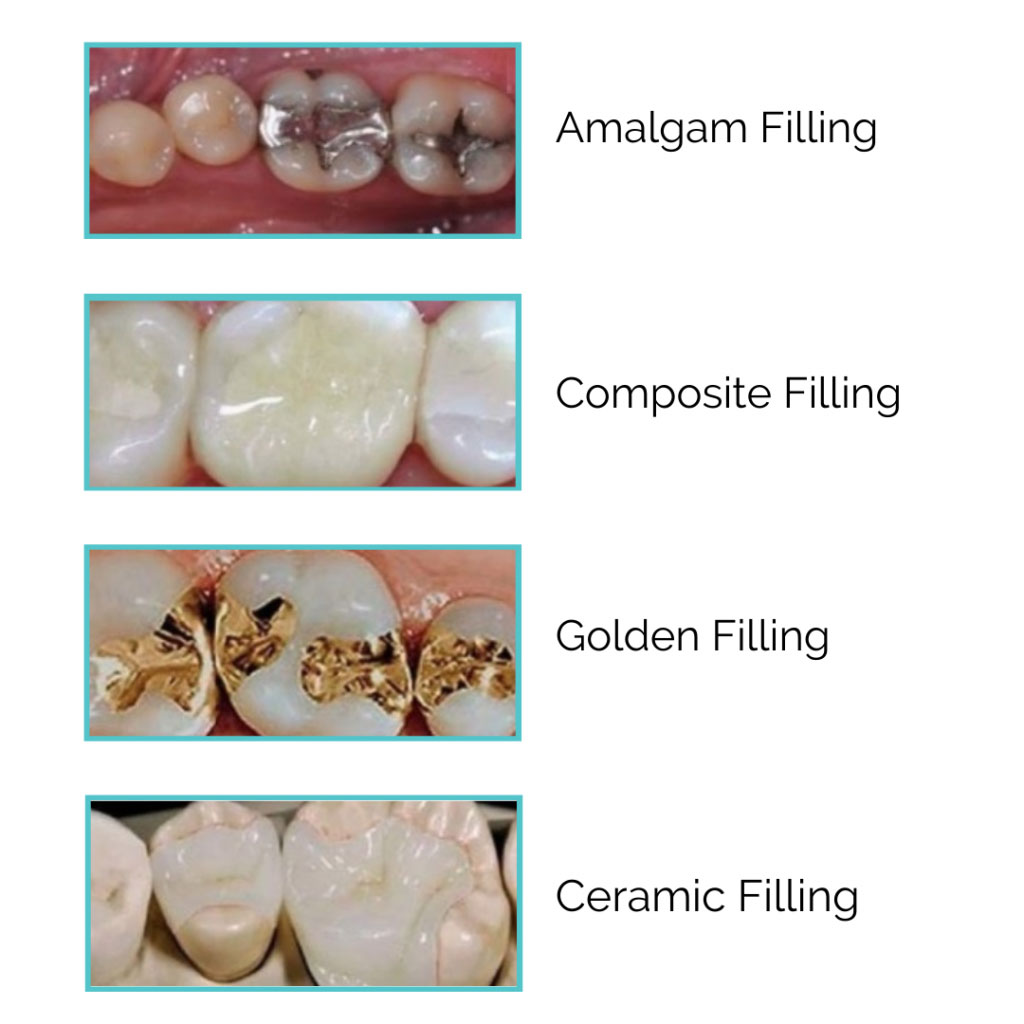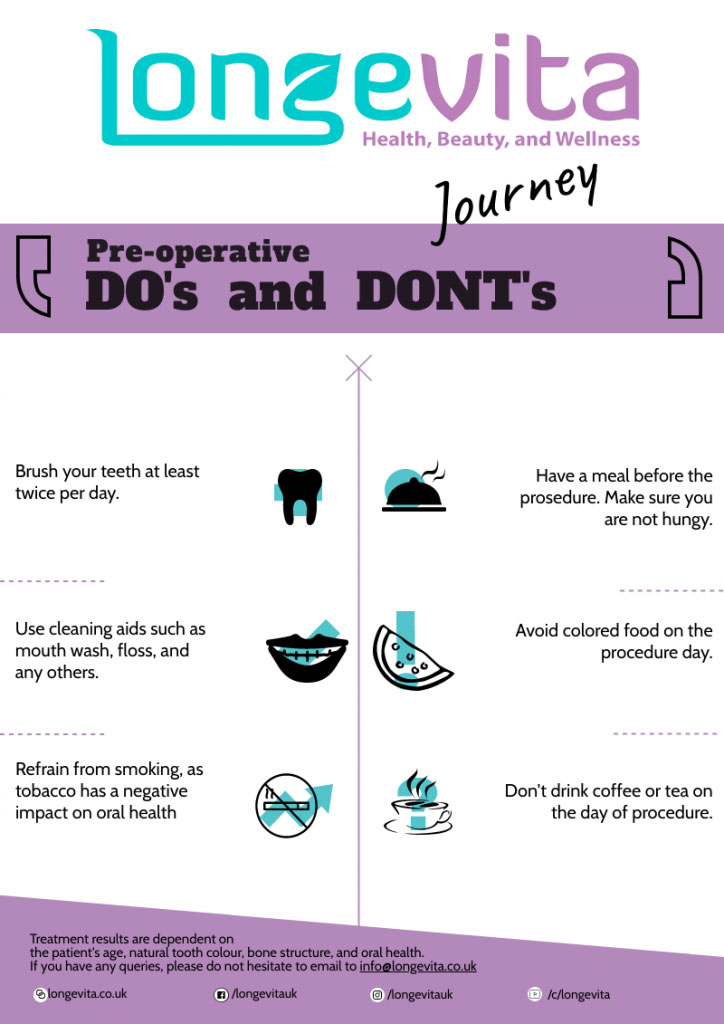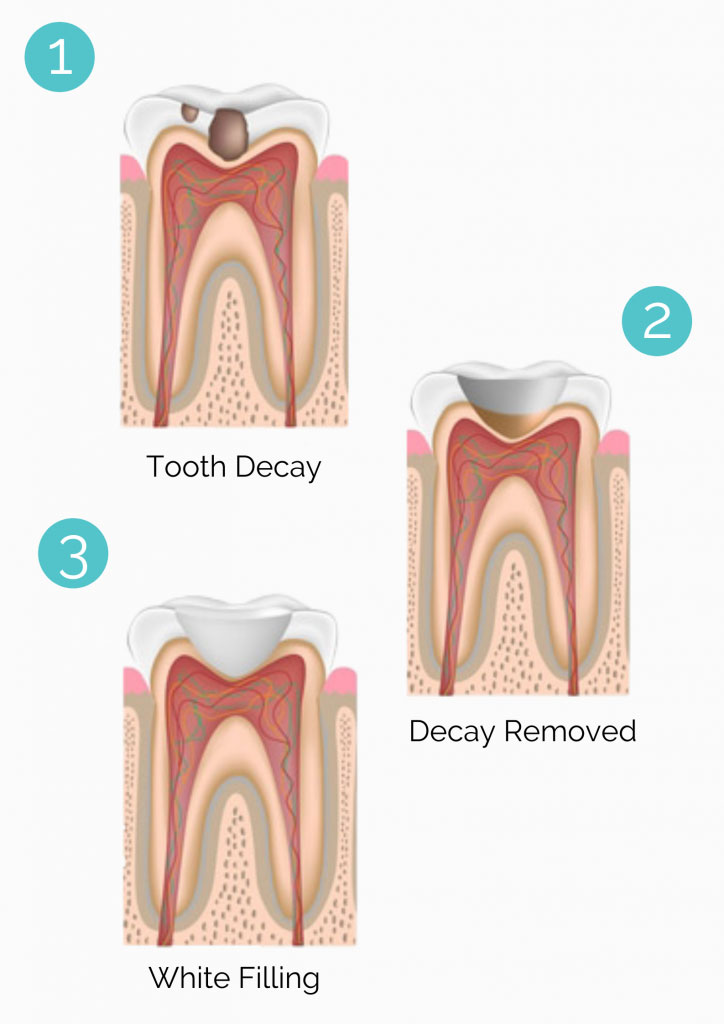Tooth filling supports the existing structure of a tooth that needs repair. It is commonly used to fill cavities and repair diastemas (gaps/spaces), as well as chipped, broken or fractured teeth.
It restores their normal functioning while giving them a natural appearance.
What Is A Tooth Filling?
A tooth filling is a hard substance that’s mainly used to fill “holes” or “cavities” in the teeth. However, it’s not just for decayed teeth.
It can also repair teeth that have been impacted by physical trauma or wear and tear.
Although it is possible for small-sized cavities to remineralize and repair themselves, when the holes are too large, they can cause increased sensitivity and pain. Therefore, a tooth filling is needed.
There are different types of tooth fillings, depending on their material composition.
It can be gold, amalgam (silver in appearance, containing an “amalgam” of metals like zinc and copper), composite resin, ceramic, plastic, and glass.
The kind of material used depends on various factors, such as
- Size of cavity
- Location of the cavity (chewing pressure to which the tooth is subjected)
- Bite of the patient
However, white fillings are more commonly used because they blend in naturally with the existing teeth.
Your dentist will also match the colour of the material with the surrounding teeth to ensure that.
That’s the main reason why many people choose to get it for front teeth fillings. However, they’re also suitable for the back teeth.

Indirect Fillings
Indirect fillings are recommended when the existing tooth structure cannot sufficiently support the fillings.
However, it is not as severely damaged as needing a dental crown. In that case, laboratory-made, customised indirect fillings are permanently bonded to the teeth.
The different types of indirect tooth fillings are as follows:
Inlays
These cover the area in between the projections (bumps/cusps) on the surface of the tooth.
They are bonded to the teeth using resin cement and are made of tooth-coloured material, so they have a natural appearance.
Onlays
Also known as partial crowns, these cover one or more of the bumps of the tooth surface.
It can better restore the strength of the tooth by allowing greater distribution of pressure.
Both inlays and onlays are more durable than traditional fillings and likely to last for 3 decades. Your dentist should make a recommendation depending on your needs.
What Is The Cost Of Tooth Filling In Turkey?
In Turkey, a tooth filling should cost around £50-£70.
The cost of tooth filling varies widely between countries. It can be three times more expensive in the UK when compared to Turkey.
The cost of tooth filling in the UK further depends on the expertise of the dentist, their qualifications, and the location of the clinic (exclusive of the aftercare).
Dental clinics in Turkey offer the procedure, accommodation and transfers during the stay and aftercare.
Because of the exchange rate and cost of living, getting medical services in Turkey is far more affordable.
Still, there may be variations in the price of a tooth filling depending on the location of the cavity, the extent of tooth decay, the material to be used for filling, and any additional treatments that you need to undergo.
Who Can Have A Tooth Filling & Why?
You are a good candidate for this dental treatment in the following instances:
Cavities
According to the National Institute of Dental and Craniofacial Research (NIDCR), 92% of adults between the ages of 20 and 64 have cavities.
Cavity filling is very common and needed to prevent the spread of the problem to the surrounding teeth.
Moreover, tooth decay filling protects the teeth from the entrapment of bacteria resulting in infection. If it’s your wisdom tooth that’s developed a cavity, you can get a wisdom tooth filling.
Gaps
There are different reasons for the formation of gaps between teeth. However, if it’s in the front, it can cause some aesthetic concerns.
With a front tooth filling, though, it is possible to reshape and fill in the space.
Cracks/Breakage
Tooth fillings can effectively restore the structural integrity of a tooth that’s been broken or cracked.
These cracks can come in the way of a beautiful smile, which is why you can consider getting a cracked tooth filling.
Temporary Use
Lasting from weeks to months, these types of tooth fillings are used in between dental appointments, primarily for emergency use.
For instance, the dentist may glue temporary fillings on after a root canal until the area heals or for temporary relief if a patient’s experiencing pain or sensitivity.
Am I Suitable For Tooth Filling?
What To Think About Before You Have Tooth Filling In Turkey?
It’s important to ask a few important questions from your dentist before having the tooth filling procedure. To begin with, you should have knowledge of the credentials and expertise of the dentist.
In addition, you should know if the clinic is registered and has malpractice policies in place. Know where the procedure will take place, whether it’s a public or private facility, in-office clinic or hospital.
Once you’re aware of these things, you should go over the details of the procedure itself with the dentist. It’s important to ask questions like:
- What is the procedure going to be like?
- What are the possible complications of tooth filling?
- How long is the recovery?
- What kind of follow-up can I expect?
- Are there any alternatives that might better suit my needs?
How Best To Prepare For A Tooth Filling?
Usually, tooth filling takes place under local anaesthesia. Therefore, you have to make some preparations because of that.
First of all, you need to inform the dentist about any medications that you’re taking. You may be advised against blood-thinning medicines and supplements.
In addition, you’d have to refrain from smoking and drinking alcohol as they can interfere with the procedure and its recovery.
Also, it’s better if you remove any accessories that you’re wearing around the mouth area.

What Is The Procedure For A Tooth Filling In Turkey?

There are different steps involved in the tooth-filling process. First of all, the dentist will perform a physical examination.
An X-ray might also be needed so that the dentist can assess the true extent of decay and damage to the teeth.
For the surgery itself, local anaesthesia will be first administered so that you do not feel any pain. After that:
- A mechanical handheld dental drill will get rid of the decay. This is also done with the help of a laser or air abrasion.
- If the cavity is close to an underlying nerve, the dentist may place a base over it to protect it.
- Afterwards, the hole is filled and hardened with the help of a blue wavelength light.
- This is followed by polishing of the tooth and removal of any excess.
The whole tooth-filling process takes anywhere from 20 minutes to an hour (more depending on the extent of the problem).
However, it should all be done in just one visit to the clinic, excluding check-up appointments.
If you’re getting indirect fillings (inlay or onlay), on the other hand, first, the dentist will drill away the decay or remove any old filling material.
Afterwards, using putty, they’ll take an impression of your teeth to send to the laboratory. Meanwhile, you’ll have temporary fillings in place.
In the second appointment, if the fit is correct, these indirect fillings will be permanently bonded.
Book A Free Consultation With Our Patient Consultants
We offer free consultations for patients across the UK & Ireland, so you can discuss your individual requirements with our specialists. Book A Free Consultation With Our Patient Consultants Today.
Recovery & Results Of Tooth Filling
Your white tooth fillings should set in immediately after the procedure since it’s hardened with the blue light.
Still, it’s best if you eat from the other side of the mouth for a few days and avoid any sticky, acidic, cold or hot foods.
Eating any hard foods can result in a chipped tooth filling, so it’s best to stay away from that for a little while.
Tooth pain after filling can occur once the anaesthesia starts to wear off. You can take painkillers for it after consulting with your dentist.
An ice pack can also help with its management. Wearing off of anaesthesia can also result in the feeling of “pins and needles”.
Keep in mind that fillings are not permanent. They can last anywhere between 5 and 15 years. It depends on how well you take care of them.
If you notice any cracks in the filling while experiencing pain and sensitivity, it’s time to replace them.
Aftercare Of Tooth Filling
For aftercare, you must take care of your dental hygiene. That means using an antibacterial mouthwash, brushing twice a day with fluoride toothpaste and flossing.
Keep in mind that sweet, sticky foods can easily erode your enamel, especially if it hasn’t been cleaned properly. This can cause further tooth decay even as you have your fillings on.
One reason for a broken tooth filling is certain habits like nail biting or teeth grinding. Therefore, to ensure the longevity of your tooth fillings, make sure to manage them.
Lastly, you need regular dental checkups so that you can maintain your oral health for a lifetime.
Side Effects to Expect After A Tooth Filling
You may experience the following side effects after a tooth filling:
Sensitivity: It’s normal to experience tooth sensitivity (to pressure, cold, and hot) for 1-2 weeks after the procedure.
Discomfort/Soreness: Because of the drilling, you’re likely to feel a bit sore for 1-2 days.
It should resolve on its own. In the event it starts to get worse, you should get in touch with your dentist.
Pain: It’s normal to experience tooth filling pain after the surgery.
However, sometimes the pain may extend to the surrounding teeth. This, too, is normal and should go away after 1-2 days.
What Could Go Wrong After A Tooth Filling?
One problem that you can experience after getting the treatment is the falling out of the filling. Chewing on hard foods right after surgery can cause it.
However, it can also happen because it gets loose over time. In this case, you should get in touch with the dentist to get it replaced.
A broken tooth filling is another problem that can arise. It can result in the separation of the filling from the tooth itself.
This allows for the “leaking” of debris into the cavity, which can result in tooth decay.
What To Do If You Have Problems After A Tooth Filling?
In case you experience any problems after the tooth filling, you can get in touch with the Aftercare Team online. You can send them an email or call them.
It’s also possible for you to open a ticket in the Support Portal. In addition, you can always consult the guides available there to ensure normal recovery.
Alternatives To A Tooth Filling
In some cases, you may be recommended other treatment options than a tooth filling.
If the structure of the tooth is too damaged, you can consider getting an extraction with a crown placed on top.
For the gaps, instead of getting fillings, you can consider getting composite bonding to reshape and resize your teeth.
However, this is more suitable for minor aesthetic problems.
Other Procedures to Have with Tooth Filling
You can get fillings to address some problem areas in your mouth.
However, you can also get additional treatments like extractions and root canals with fillings to address other oral health concerns.
On the other hand, if you have aesthetic problems, treatments like crowns and veneers can be done within the same visit.
FAQ
Can tooth fillings change colour?
Your fillings can change colour over time. They can stand out in contrast with the surrounding teeth or even the tooth on which it is placed. How soon the colour changes depends on the lifestyle of an individual.
In general, it can take on a yellowish hue with time. Those who get metal filling complain about black tooth filling after some time. That’s because it oxidises and breaks down.
Replacing the fillings is worth considering in all these instances.
Do tooth fillings hurt?
Once they’re bonded, the presence of tooth fillings should not hurt. Any worsening pain may be an indication of infection or poor application.
If this is the case, you need to contact your dentist immediately.
Will a retainer cause damage to a tooth filling?
If you’re wearing retainers and have had a tooth filling, you may need to get new ones as they may not fit onto your teeth anymore.
What does a tooth filling feel like?
Initially, its surface might feel rough. It’s because of the polish. However, it should get better after 1-2 days. If you find that your tooth filling feels sharp, you should get in touch with your dentist.
Tooth filling vs crown: Which one’s better?
A crown will suit you better if your teeth are extensively damaged. If this is the case, fillings might not be able to support the tooth anyway.
If durability is a concern of yours, it’s better to get crowns as they last longer.
Reviewed and approved by Dr. Izbel Aksit.